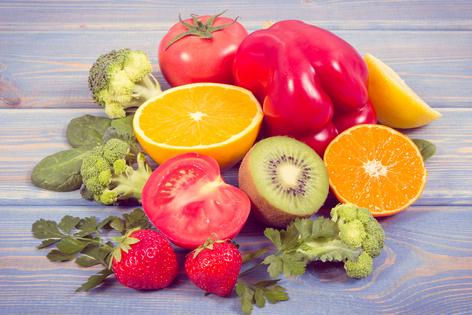Environmental Nutrition: The best diet for weight loss
Losing weight and getting healthier is a common goal among Americans; we spend $60 billion dollars a year on weight loss books, gym memberships, apps, programs and special diet foods. Yet, collectively we are getting heavier, which leads to an increased risk of chronic diseases such as heart disease, type 2 diabetes, and cancer. The answer to weight loss is multifaceted, but a good starting point is understanding calories.
The basics on calories
Calories are the source of energy used by the human body and are found in foods in the form of carbohydrates, proteins, and fats. We need energy to perform basic bodily functions and even more if we exercise. Excess calories are stored as body fat, essentially reserved energy. In some ways, the science of losing weight is simple: expend more calories than are consumed and your body will use body fat for energy. You can do this by eating less or by exercising more. The catch is that we don't live our lives in a lab. Food tastes good, we are creatures of habit, and we like to indulge at social gatherings. Life gets in the way. So, what do you do? Here are a few, evidence-based approaches for weight loss.
Forget dieting; make a lifestyle change
Diets are often measured by short-term results and don't hold up over the long-term. You're better off changing your lifestyle with sustainable strategies that will lead to long-term health. "Eating according to internal cues, including hunger, fullness, and satisfaction, rather than external cues such as dieting, food rules, and cultural pressures, helps us build trust in our eating habits and is most likely to lead to a stable weight," says Taylor Wolfram, M.S., R.D., a Chicago-based dietitian.
Make a goal
It should be S.M.A.R.T.: Specific, Measurable, Achievable, Realistic, and Timely. If you make a specific, measurable goal, you can look back on your week and know if you accomplished it or not. Then adjust your goal if it's unrealistic or if you are ready for another goal. Here's a simple one: Eat three servings of legumes per week.
Choose high-fiber foods
Vegetables, beans, and whole grains are high in fiber and volume and low in calories. Fiber increases satiety, making you feel full while eating less. The extra volume in these foods mean you can eat more of them, while consuming fewer calories. Start by adding a bean soup or salad to your dinner to help you feel more satisfied with the meals you typically enjoy.
Watch added fats in food preparation
Fat -- no matter whether it's olive or coconut oil -- is the most calorically-dense food ingredient. Oil (at 120 calories per tablespoon) weighs in at over 4000 calories per pound, while vegetables are under 200 calories per pound.
Don't focus on the scale
Changing your lifestyle takes time, and there's more to good health than a number on a scale. Building muscle can add weight, and weight loss isn't always a straight line down. Don't get caught up in the micro changes if you are making the macro ones. Wolfram adds, "Body weight is very complex with countless contributing factors, most of which are beyond our control. Science tells us healthy lifestyle behaviors include physical activity, eating plenty of fruits and vegetables, and not smoking. These are more strongly linked to health outcomes than is weight."
Don't fall for these 4 weight loss myths
1. Juicing helps you lose weight.
Juicing is not a preferred weight loss strategy, because replacing meals with juice isn't a sustainable habit. Additionally, when fruits and vegetables are juiced, components such as fiber are lost, but the simple sugars remain. Drinking the equivalent of five fruits is not the same as eating those five fruits. Drinking calories for weight loss can be problematic because it eliminates the chewing process, making overconsumption easier. Drinking 500 calories does not provide the same satiety as eating 500 whole food calories.
2. Fasting is required for weight loss.
A newer trend in weight loss is fasting or intermittent fasting. The former has long been disproven as a way for successful weight loss because most individuals return to the eating habits that caused the weight gain to begin with. Intermittent fasting, which involves going a set period of time between meals, may help you learn hunger cues, but there's not enough research to know if this works in the long-term.
3. What works for one works for others.
Ask about weight loss and you'll get a number of success stories, which adds to the confusion. It's important to remember that what worked for your cousin, may not work for you. And often people don't realize all of the changes they have made or the support system they have in place. These factors can greatly influence success beyond simple diet strategies.
4. There are magical fat-burning foods.
No one food significantly increases metabolism or triggers fat burning. That's what makes the diet industry so appealing. It is difficult to lose weight successfully, so the appeal of magic foods, from coconut oil to superfruit, is strong.
(Environmental Nutrition is the award-winning independent newsletter written by nutrition experts dedicated to providing readers up-to-date, accurate information about health and nutrition in clear, concise English. For more information, visit www.environmentalnutrition.com.)







